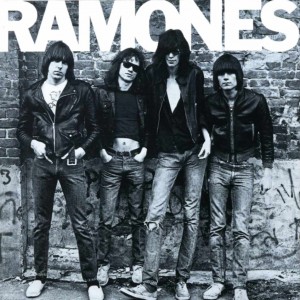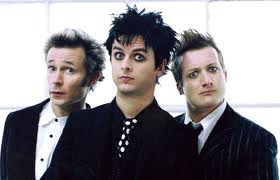History Of Punk
posted in: Features • Rock
 Like all great historical movements, punk rock’s timeline extends back further than its universally accepted starting date of 1977. Antecedents like the early Stooges and MC5 albums suggested, as far back as 1969, the dwindling peace-and-love influence of the hippies on popular culture, and indirectly voiced the rumblings of discontent of a disillusioned generation.
Like all great historical movements, punk rock’s timeline extends back further than its universally accepted starting date of 1977. Antecedents like the early Stooges and MC5 albums suggested, as far back as 1969, the dwindling peace-and-love influence of the hippies on popular culture, and indirectly voiced the rumblings of discontent of a disillusioned generation.
Teenagers of the ˜70s started to resent the bloated excess of classic rock and the slick materialism of the disco scene. Although small musical fires were being set all over the world simultaneously, one of punk’s ground zeros was the shabby rock club CBGB on New York City’s then-dicey (now mostly gentrified) Bowery. The sartorial outrageousness and garage-y musical grit of The New York Dolls, and later the rough and tumble, untutored appeal of The Ramones, Voidoids, Patti Smith, Blondie and other stars of the CBGB scene turned designer/clothing shop-owner Malcolm McLaren’s head, later to resurface as influences on the band McLaren managed, The Sex Pistols. Indeed the CB’s scene, given wings by the 1976 release of the first Ramones album on Sire Records, made a big impact in the UK amongst unemployed, disaffected teenagers of the underclass, who immediately adopted (and adapted) the do-it-yourself aesthetic to express their own dissatisfaction with their decaying empire, bad economy and hopeless-seeming future.

By 1977, The Clash, The Subway Sect, The Buzzcocks, Siouxsie & the Banshees, X-Ray Spex, The Slits and many more bands were all making important, yet musically diverse, contributions to the punk canon. Other punk scenes flourished in Ireland (The Undertones) and Australia (The Saints, Radio Birdman) and punk became well-represented all over Europe and North America.
At the turn of the ˜80s, punk had splintered into a variety of styles, including hardcore (especially popular on the West Coast of the US), new wave, synth-pop and post-punk. Hybrids and offshoots evolved, like two-tone ska, cowpunk, psychobilly, garage-punk and surf-punk. Metal began to reemerge as an influence, and many bands added metallic elements, to varying degrees, to the punk template. A more melodic and perhaps song-oriented strain of punk emerged toward the end of the decade, giving rise to what became known as alternative rock, and later indie rock. The Seattle punk scene gave birth to grunge, and grunge’s posterboys, Nirvana, became one of the best-loved bands of the era.


The success of Nirvana and other alternative acts changed the music industry in the ˜90s. Punk was more widely accepted than ever before. By mid-decade, radio and MTV were playing the hell out of pop punk bands like Green Day and Jimmy Eat World. As punk became more and more mainstream and commercial, teenagers and other creative folks continued to find ways to reclaim the sound and attitude for their own”Riot Grrls, twee pop, emo, screamo, post-hardcore, dance punk and an endless variety of other subgenres have materialized, all fueled by the same passionate need to rebel, to communicate and, ultimately, to rock.
Paula Carino is a musician and writer based in New York. She’s written for AMG, American Songwriter and contributed to the Encyclopedia of Pop Music. She’s also a yoga teacher and authored the book “Yoga To Go.”
